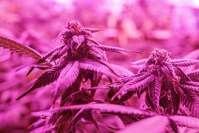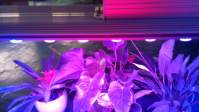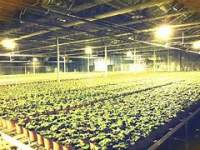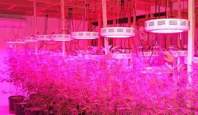12 kinds of plant light formula of 1000w LED plant light
In recent years, with the improvement of agricultural productivity, greenhouses have developed rapidly. Traditional greenhouses using ordinary electric light sources to supplement light can no longer meet people's growing needs. Ordinary electric light sources lack the analysis of specific spectral components, resulting in impure light quality processing, inconsistent light intensity, lower than the plant light compensation point, and low energy efficiency of the illuminating light source, which ultimately leads to unsatisfactory input-output ratios. Since the introduction of the new 1000w LED plant light, due to its small size, light weight, long life and adjustable light intensity, it has become one of the most important light sources for the regulation of the light environment of plants. Has obvious advantages.
one. Application classification of light
Visual application: Applied to lighting, the main parameter is the luminous flux obtained by weighting the spectral radiant power by the visual effect function of the average human eye in the physical unit.
Non-visual applications: For animal, plant, medical, microbiological, identification, data transmission and other applications, the physical unit is radiant power or light quantum number.
two. The energy of photons
The luminescence of LED plant lights is a phenomenon of energy conversion. The recombination of electrons and holes means that excess energy will emit light. The shorter the wavelength of the generated photons, the higher the energy of the generated photons. Photons are the smallest unit in the process of light transfer energy. , Plant photosynthesis absorbs this kind of energetic photons. Photosynthesis is driven by the photon energy package instead of the general light energy effect. This is the reason why plant photosynthesis requires photons to express.
The energy of a single photon is 1.75 at a wavelength of 400nm to a wavelength of 700nm. The energy of blue light is 1.75 times larger than that of red light.
Under the same radiation power, the number of generated photons increases with the increase of wavelength.
Photosynthesis is produced by photon flux. It is a process in which energy-carrying photons decompose CO2 and H2O to produce new molecules under the action of enzymes. However, not all photons absorbed by plants produce the same photosynthesis and require energy. To understand photosynthesis from the perspective of transmission, use "light meal" to understand the relationship between photons and plants
The number of photons of photosynthetically active radiation adopts two measurement units: photosynthetic photon flux (PPF), which has a wavelength range from 400 to 700 nm, and the second is the photon flux (YPF) produced, whose wavelength range can be based on the photosynthesis of plants. Determine the wavelength range under the response.
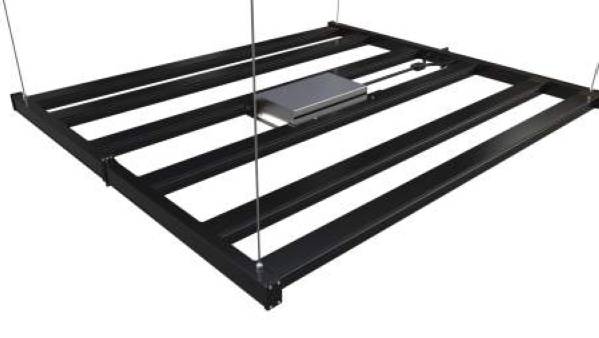
Third, the parameters and units of led plant lights
Molar weight (mol): When describing the basic units of matter, such as molecules, ions, light quanta, etc., the molar weight is often expressed. The molar weight is composed of 6.022EXP (23) basic particles of matter to form a basic quantity, the unit Yes: mole (mol), the number of photons in plant photosynthesis is also expressed in molar quantity, a photon mole (mol) contains 6.022EXP (23) photons, because the unit of mole is large in plant photosynthesis, Many parameters are expressed in micromoles.
1 mole (mol) = 1000000 micromole (umol).
One micromole (umol) contains 60 trillion photons.
PAR: photosynthetically active radiation
The radiation of a specific wavelength range (400-700nm) used by plants for photosynthesis is called photosynthetic active radiation. There are two labeling units. One is expressed by photosynthetic irradiance (w/m2), which is mainly used for photosynthesis of sunlight. The role of the general research, the second is to use the photosynthetic photon flux density PPFD to express (umol/m2s), mainly used for artificial light sources and sunlight research on plant photosynthesis, using the photon flux radiated to the surface of the plant this The method to express the radiation ability of the radiation source is called the PPF PAR method. (Note: m2 means square meter)
PAR accounts for about 50% of the total solar radiation. It should be noted that the unit of photosynthetic irradiance does not reflect the influence of wavelength.
PPF: photosynthetic photon flux
It refers to the number of micromoles of photons emitted by artificial light sources per second in the wavelength range of 400-700nm, and the unit is umol/s.
PPFD: photosynthetic photon flux density
Corresponding to PPF is the number of micromoles radiated by the light source per square meter per second, the unit is umol/m2s, which is the concept of density.
PPFD is the PPF expressed in one square meter.
PPFD is a physical quantity related to the radiation distance, which is inversely proportional to the square of the radiation distance.
1 PPFD means the number of photons of 1 micromole per second radiated on a surface of 1 square meter.
How big is 1umol/m2s (PPFD)? It means that there are 6 photons in 10 square nanometers.
YPF: photon flux produced
It refers to the number of micromoles of photons radiated per second in the wavelength range emitted by the artificial light source, in umol/s. The generally considered wavelength range is 360-760nm. For the light source of LED plant lights, the wavelength range is set at 380-800nm.
YPFD: photon flux density produced
Corresponding to YPF is the number of micromoles of radiation per square meter per second, the unit is umol/m2s, which is the concept of density.
YPFD is expressed as YPF in the range of one square meter.
YPFD is a physical quantity related to the radiation distance, which is inversely proportional to the square of the radiation distance.
YPFD can more accurately express the light quantity of LED plant light quality.
For the red and blue spectrum, YPF is equal to PPF, and other spectra PPF
The difference between PAR and PPFD, PAR is a physical concept, and PPFD is the unit of this physical concept.
The relationship between PPFD and PPF: PPFD is the basic quantity derived from planting process parameters, and PPF is the most important parameter for lamp manufacturing.
In order to clearly understand the three concepts of radiation, lighting and plant photosynthesis, we have made the following table.
Comparison table of the three concepts of radiation, lighting, and plant photosynthesis of artificial light sources:
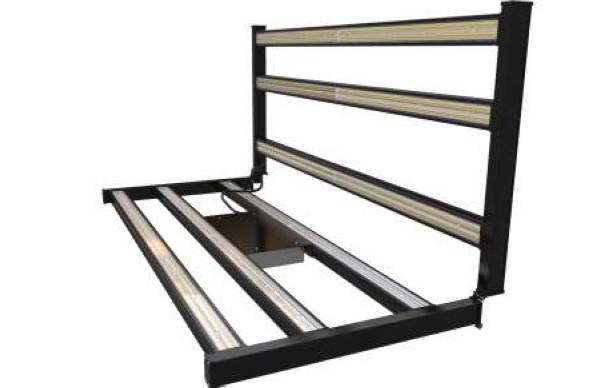
four. Quantitative analysis parameters between different light sources and lamps
For different artificial light sources, the following indicators can be used to compare their spectral parameter performance. These parameters can also compare the spectral parameter performance of different manufacturers under the same spectral form of the same light source. Generally, the larger the value, the better, the larger the value. It does not mean that the planting efficiency is high, it needs to be a professional assessment with professional skills.
PPF/w: refers to the PPF produced per watt of power consumption.
PPFD/w: Represents the PPFD produced per watt of power consumption.
YPF/w: It means YPF produced per watt of power consumption.
YPFD/w: Indicates the YPFD produced per watt of power consumption.
The above values are related to the spectral shape (light quality). If these values are divided by the price of the plant lamp, then the price of the plant lamp can be compared. The validity of these values needs to be analyzed by a third-party independent professional Only reliable.
Generally, the maximum of agricultural sodium lamps is 2.2 PPF/w, and the maximum of LED light sources is 2.1 PPF/w
Five, light quality, light quantity, light cycle
The light quality LQ is the form of the spectrum in a certain wavelength range, and there is no unit.
The quantity of light is LI, which means the number of photons that can be radiated by light quality. It can be expressed either by photon flux or photon density, in units of PPF (YPF) or PPFD (YPFD).
The photoperiod is PP, which means the total time that the plant lights are turned on in a natural day, unit: hour
six. The amount of radiation that plants need every day
Many people are keen to study the compensation point and saturation point of plant radiation to estimate how much PPFD should be used for plant lights. The range from compensation point to saturation point is large. The selection of light gauges for plant lights in this range is artificially random. The compensation point and saturation point are only qualitative analysis. The quantification process must take into account other environmental factors. It cannot be understood mechanically. It may be more appropriate to use "light meal" to explain plant supplement light. In our planting technology expert system, What we give is the amount of radiation that plants reasonably need per square meter per day. This value is related to planting cost and planting quality. Our parameter refers to the planting process parameter DLI, which has been studied for a long time in agricultural science, and has a theoretical basis.
Total amount of sunlight DLA: refers to the number of moles of photons produced per square meter of PPFD per day under the photoperiod of the artificial light source, unit: mol/m2d.
Since the amount of light of the plant lamp is constant under the photoperiod, DLA=0.0036*PPFD*PP. The unit of PP-photoperiod is: hour.
DLA is a parameter of the planting process, and the PPFD required for planting in a plant factory is calculated using DLA.
Daylight integral DLI: refers to the integral amount of photosynthesis per square meter per day under the effective radiation of sunlight, unit: mol/m2d.
DLI is a very important photosynthetic quantity parameter in traditional planting. It is an important technical parameter of long-term agricultural scientific research. It has universal planting guidance. Under the irradiation of sunlight, due to the photosynthetic irradiance of sunlight (converted to PPFD) ) Constantly changing with time and weather, this change will sometimes occur between the compensation point and the saturation point. DLI needs to be calculated in accordance with the integral method. The preliminary calculation can be calculated using the average PPFD and the effective time (hours). .
Under sunlight, DLI is calculated according to the average method, DLI=0.0036*PPFD (average)*valid time. Effective time unit: hour.
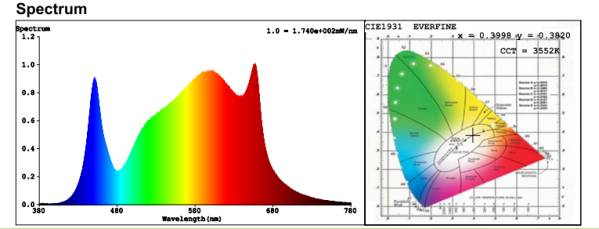
In outdoor planting, the DLI parameters are affected by the saturation point. In the greenhouse, the indoor DLI is smaller than the outdoor DLI, and the greenhouse DLI is usually smaller than the DLA. The establishment of DLA parameters scientifically provides whether the greenhouse is The important theoretical basis for supplementary light and the amount of supplementary light. The systematic establishment of a DLA database of artificial light sources can provide a basic data system for plant factory applications, which is of great significance. It is hoped that agricultural researchers will participate in this work.
DLA is the most important parameter of the planting process for plant factories and greenhouses. It is the most important basis for the design of plant lights. DLA can be obtained through experimental data or weighted by DLI, but it needs to be corrected by experimental data. DLA and DLI The relationship is: DLA
Seven, the relationship between light source power, PPF, PPFD, installation height
Appropriate installation height can reduce the power of the light source and reduce the energy consumption of the system. For the same kind of PPF light source, the relationship between the installation height and the PPFD is the increase of the installation height, and the PPFD decreases at the rate of the second power.
Eight, the limit parameters of LED plant lights
After the spectral form of the plant light is determined, the highest YPF or PPF corresponding to this spectral form can be calculated. This is very important for evaluating the application of LED plant lights, and it is also a comparison of the performance of LED plant lights with other types of plant lights. The main method.
Take 40% radiation efficiency as an example:
Wavelength 445nm, PPF/w = 1.538
Wavelength 660nm, PPF/w = 2.19
3000k white light, YPF/w = 1.99
Blue light + red powder, YPF/w = 2.133
Red and blue, PPF/w = 2.12
The highest radiation efficiency of the current LED packaging technology in bulk supply is less than 40%.
The current PPF/w value of LED plant lights is less than 2, basically between 1.6-1.8.
At present, the PPF/w value of agricultural sodium lamps is between 2.0-2.2.
After continuous research, Shenzhen Yaorongke Co., Ltd. found that different plant growth and development require different light formulas. According to a more reasonable light formula, 1000w LED plant lights can be configured to grow more perfect. The following are some of the researched optical ratio parameters:
(1) Lettuce: The light sources of red and blue light 6:1 and 7:1 respectively for planting and seedling cultivation are the most suitable for its growth.
(2) Leek: The ratio of plant height, stem thickness, leaf width and other mass ratios of leeks under the red/blue 7:1 treatment was significantly higher than other treatments.
(3) Cucumber: 7:2 is the best ratio of red and blue light for the growth of cucumber seedlings. And the growth period 7:1 is the best ratio of red and blue light.
(4) Green cabbage and water spinach: 7:1 is the best ratio of red and blue light for the growth of green cabbage and water spinach.
(5) White radish: the most suitable light quality for growth: the ratio of red and blue light is 8:1.
(6) Lettuce: The ratio of red to blue light is 9:1, which is beneficial to the growth of lettuce.
(7) Strawberries and tomatoes: The red and blue light ratio of 9:1 is the most beneficial to the growth of strawberries and tomatoes, and the fruit is full and nutritious.
(8) Holly: Red and blue are arranged in a ratio of 8:1. Holly grows best, is strong and has a very well-developed root system.
(9) Sprouts: The effect is most obvious with the ratio of red, green and blue light of 6:2:1.
(10) Calla lily: For growth conditions, the ratio of 6:2 between red and blue light is the best.
(11) Anthurium andraeanum hot sun: Comprehensive analysis shows that the 7:3 treatment of red and blue light is better, which is conducive to morphology, root growth and dry matter accumulation.
(12) Dendrobium officinale: The ratio of red and blue light is 7:3, which has the best proliferation effect; at 6:4, it is more conducive to photosynthesis and material accumulation of seedlings.
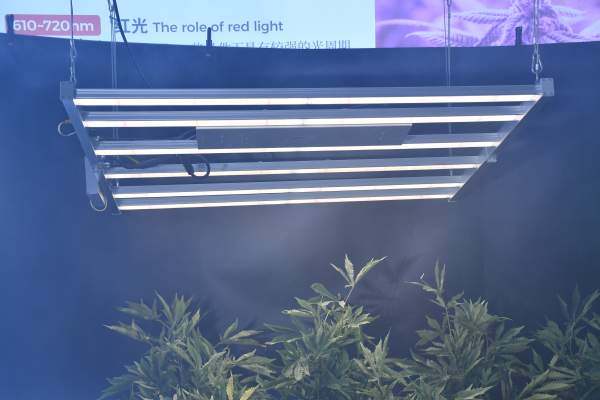
Shenzhen Yaorong Technology Co., Ltd. 1000w LED plant light can meet the needs of plant wavelength illumination, especially suitable for light-controlled plant cultivation environment, can well meet the needs of the market, and is widely used in plant cultivation and greenhouse light supplementation and plant tissue culture And plant factories have many advantages such as promoting plant growth, regulating the establishment of plant morphology, energy saving and environmental protection.


